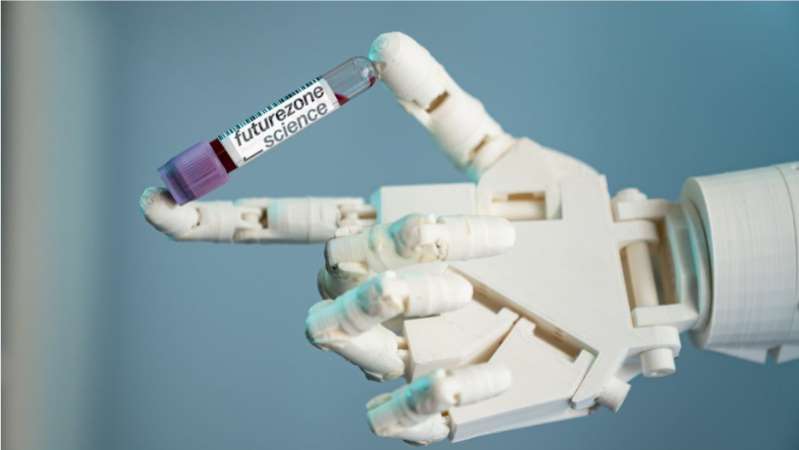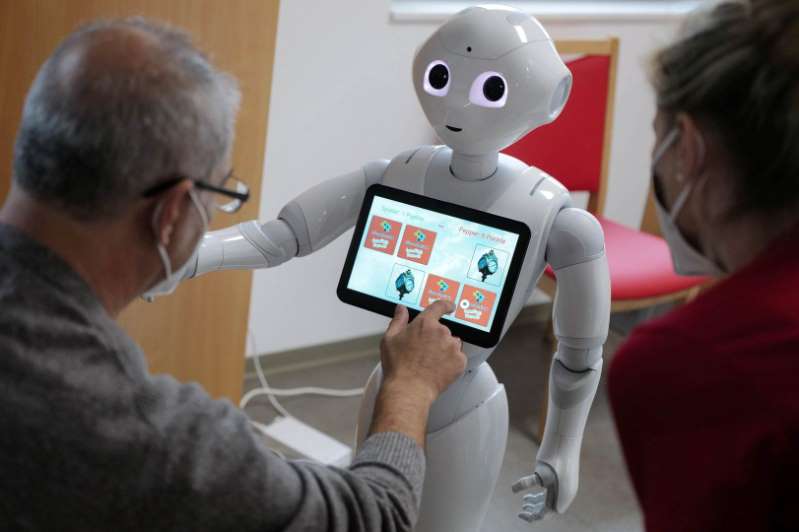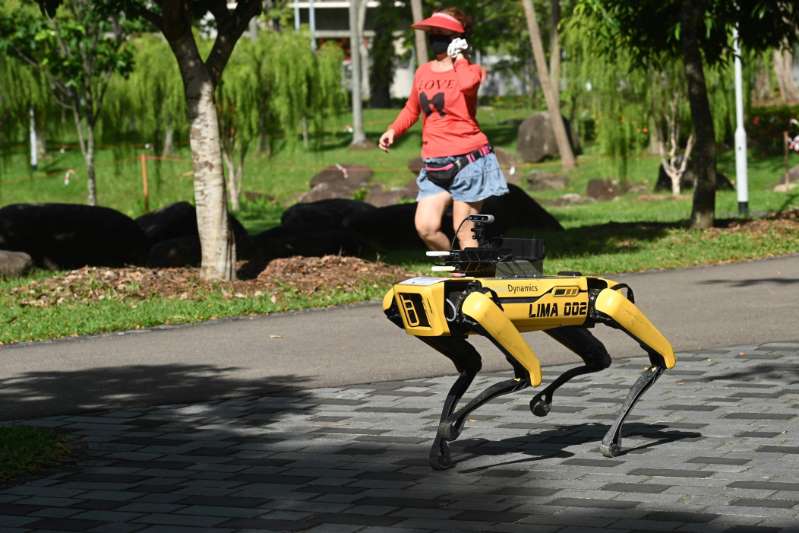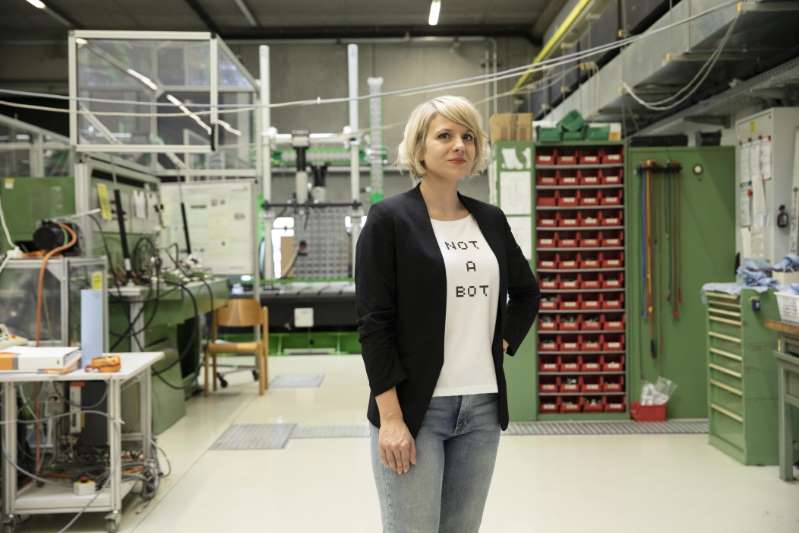Robots are used worldwide in the fight against Corona. Austria is still reluctant here.

“Please wear mouth and nose protection”. In Vienna this request is known from the police who patrol the Danube Canal. In Shanghai, this task is performed by a box-shaped robot on 4 wheels and large “camera eyes” when it locates people without a mask. Again in Singapore, the robotic dog Spot alerts park visitors to the distance rules if they are too close together.
All over the world, robots are used in the fight against the pandemic – be it for low-threshold work or in life-threatening situations. This is also their purpose: “Historically, robots were developed to relieve humans of work that was boring, dirty or dangerous. Her first and still largest area of application is in industry, ”says robot psychologist Martina Mara from the Johannes Kepler University of futurezone. Similar to industry, the fight against infectious diseases would create environments that are potentially dangerous for humans but harmless to robots.
Medication in bed
In hospitals, for example: while a robot in the Italian Circolo Hospital collects information about the patient's state of health, another in India brings medicines and food to the bedside. Meanwhile, the globally popular UVD robot takes care of disinfecting the rooms using UV light.
Humanoid robots – above all Pepper – ensure more comfort for patients. Equipped with a microphone and a screen, it enables patients from all over the world to chat virtually with their relatives.

Machines can also be psychologically valuable: “There are robots or animated gadgets that can play songs or play games. There are also interactive products such as the robotic cuddly seal 'Paro', which simulates physical closeness and reacts to being caressed with a kind of purr. It can be entertaining for in between, ”says Mara. However, because the interactions with them are currently not very complex, the pleasure in them rarely lasts long-term.
New time
How long the enthusiasm for robotic helpers will last after the corona crisis remains to be seen. In general, however, they seem to be gaining more attention due to the pandemic. “In robotics, the corona crisis is seen as significant for technical progress. The international journal Science Robotics, for example, described COVID-19 in an editorial as a 'catalyst' for the development and dissemination of robot systems, ”says the researcher.
And yet there seem to be geographical boundaries. So you hardly get to see these developments in Austria. “Overall, it is not yet as widespread as some video on the Internet suggests, and the role of robots in the fight against the crisis is correspondingly limited,” says Mara.
“Robot Bullying”
The fact that robots patrol local streets and draw attention to safety measures would be a strange idea even for the robot researcher: “It sounds a bit like a technocratic surveillance scenario. But if we want to play it through, I could imagine robot bullying. This term appeared in the research community about 10 years ago and describes aggressive or harassing behavior towards robots. “
Using video analyzes in an Asian shopping center, according to Mara, it was shown years ago how children and adolescents try to outsmart an information robot, block its path or kick it. “If I now imagine such a patrolling robot on Mariahilferstrasse, it would quickly become a victim of mockery – at the latest when it throws it over the sidewalk,” says the expert.
More acceptance
Instead of robotic guards, information robots or a kind of interactive mascot that informs in a playful and friendly way about the usefulness of protective measures would be a better alternative in this country. “In any case, the intention of the developer would have to be classified as trustworthy,” says Mara.
A reality check is also essential: “To the extent that it becomes clear that robots are not super-androids as we know them from science fiction, but rather machines that are often quite limited in their functionality.”

Robot dog Spot warns visitors to the park in Singapore to keep the minimum distance
Away from science fiction
Currently, robot research is increasingly concerned with the link between robotic hardware and artificial intelligence, Mara knows. The latter is intended to help robots perceive and analyze their environment better and, for example, react more accurately to human interaction partners.
In the Robopsychology Lab in Linz, among other things, collaborative robots are researched, which work physically close to people in industry, as well as exoskeletons, which, according to Mara, could be described as “robots you can wear”. “You can see: Everything is relatively far removed from the stereotypical science fiction images.”


